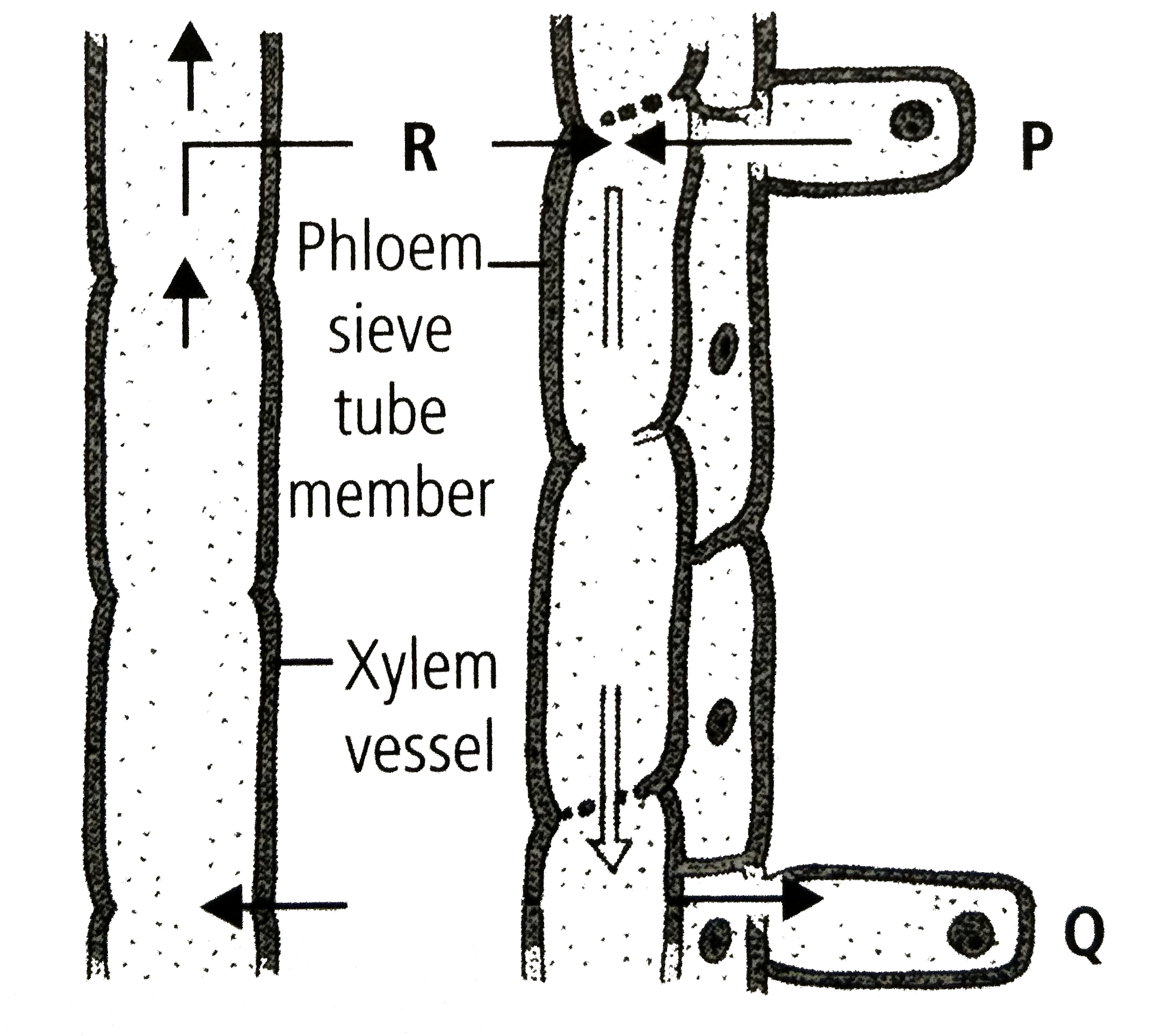Write the merits and demerits of mass flow hypothesis.
Step-by-Step Solution
Step 1: Define Mass Flow Hypothesis
- The mass flow hypothesis, proposed by Ernst Munch in 1930, explains the movement of sap through the phloem in plants. It suggests that sap flows from areas of high sugar concentration (source) to areas of low sugar concentration (sink) due to pressure differences.
Step 2: List the Merits of Mass Flow Hypothesis
1. High Sugar Exudates: When a woody or herbaceous plant is griddled (cut through the bark), the sap collected from the cut end contains high concentrations of sugar. This observation supports the idea that sap movement is driven by sugar concentration.
2. Positive Concentration Gradient: The hypothesis accounts for the disappearance of the positive concentration gradient when plants are defoliated (leaves are removed). This indicates that the flow of sap is closely related to the presence of leaves and their ability to produce sugars.
Step 3: List the Demerits of Mass Flow Hypothesis
1. Unidirectional Movement: The hypothesis primarily explains the unidirectional movement of solutes, which means it does not account for the possibility of bidirectional or multidirectional transport of nutrients in the phloem.
2. Osmotic Pressure Ignored: The osmotic pressure of mesophyll cells and root hairs is not adequately addressed in this hypothesis, which may lead to an incomplete understanding of how solutes are transported.
3. Passive Role of Sieve Tubes: The theory assigns a passive role to sieve tubes and protoplasm, focusing more on the flow of sap rather than the active role these structures may play in the transport process.
Summary of Merits and Demerits
- Merits:
1. High sugar concentration in sap after griddling.
2. Positive concentration gradient disappears upon defoliation.
- Demerits:
1. Explains only unidirectional movement of solutes.
2. Ignores osmotic pressure of mesophyll cells and root hairs.
3. Underestimates the role of sieve tubes and protoplasm.
- The mass flow hypothesis, proposed by Ernst Munch in 1930, explains the movement of sap through the phloem in plants. It suggests that sap flows from areas of high sugar concentration (source) to areas of low sugar concentration (sink) due to pressure differences.
1. High Sugar Exudates: When a woody or herbaceous plant is griddled (cut through the bark), the sap collected from the cut end contains high concentrations of sugar. This observation supports the idea that sap movement is driven by sugar concentration.
2. Positive Concentration Gradient: The hypothesis accounts for the disappearance of the positive concentration gradient when plants are defoliated (leaves are removed). This indicates that the flow of sap is closely related to the presence of leaves and their ability to produce sugars.
1. Unidirectional Movement: The hypothesis primarily explains the unidirectional movement of solutes, which means it does not account for the possibility of bidirectional or multidirectional transport of nutrients in the phloem.
- Merits:
1. High sugar concentration in sap after griddling.
2. Positive concentration gradient disappears upon defoliation.
- Demerits:
1. Explains only unidirectional movement of solutes.
2. Ignores osmotic pressure of mesophyll cells and root hairs.
3. Underestimates the role of sieve tubes and protoplasm.
Topper's Solved these Questions
- BOOK - ICSECHAPTER - SELF ASSESSMENT PAPER 5EXERCISE - Part - II SECTION - C (Answer all questions)7videos
SELF ASSESSMENT PAPER 5
- BOOK - ICSECHAPTER - SELF ASSESSMENT PAPER 5EXERCISE - Part - II SECTION - A (Answer all questions)9videos
SELF ASSESSMENT PAPER 5
- BOOK - ICSECHAPTER - SELF ASSESSMENT PAPER 4EXERCISE - Part - II SECTION - C (Answer all questions)7videos
SELF ASSESSMENT PAPER 4
- BOOK - ICSECHAPTER - SELF ASSESSMENT PAPER-3EXERCISE - PART II (SECTION C)4videos
SELF ASSESSMENT PAPER-3
Similar Questions
Knowledge Check
- Question 1 - Select One
Given figure demonstrates the translocation of organic solutes according to pressure flow hypothesis.

Which out of the following statements is incorrect regarding this?AA continuous high osmotic concentration is maintained in region P, which loads a sieve tube element by passively transporting solute molecules into it,BR shows the movement of H2O into sieve tube elements from nearby xylem vessels by osmosisCTranslocation of organic solutes takes place from region P with high turgor pressure to region Q with low turgor pressureDIn region Q material is either consumed or is converted into insoluble storage forms resulting in decreased osmotic pressure.
What is the bulk or mass flow hypothesis ?
View SolutionWhich of the following is not correct in mass flow hypothesis ?
View SolutionWhich of the following is not correct mass flow hypothesis
View SolutionAssertion : Translocation of sugar from source to sink is defined as pressure flow hypothesis. Reason : Translocations of the solutes is facilitated through living phloem sieve tube cells
View SolutionState Atomic hypothesis.
View SolutionState Avogadro's hypothesis.
View SolutionState and explain Avogadro's hypothesis.
View Solution

